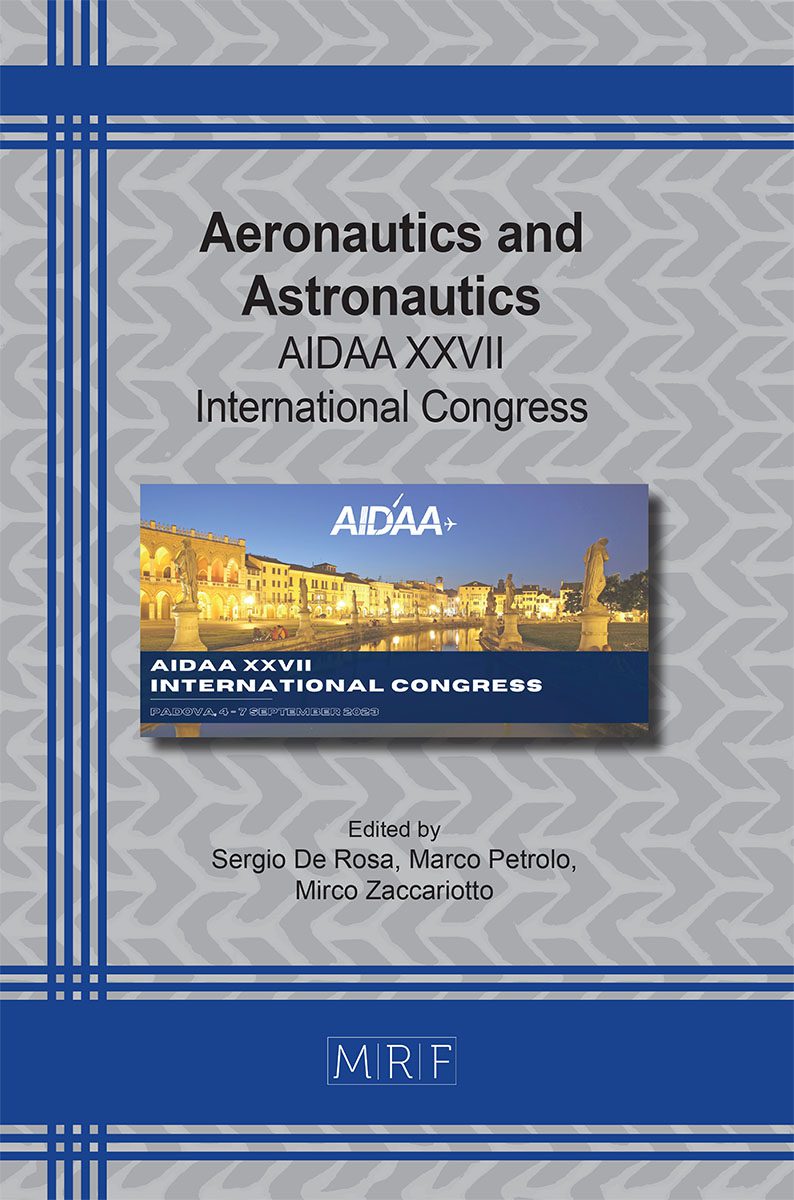Thermal fluid-structure interaction by discontinuous Galerkin methods
Vincenzo Gulizzi
download PDFAbstract. This research study presents a novel high-order accurate computational framework for thermal fluid-structure interaction problems. The framework is based on the use of block-structured Cartesian grids where level set functions are employed to define both the fluid and the solid regions. This leads to a mesh that consists of a collection of standard d-dimensional rectangular elements and a relatively smaller number of irregular elements at the fluid-solid interface. The embedded boundaries are resolved with high-order accuracy thanks to the use of high-order accurate quadrature rules for implicitly-defined regions. The fluid is assumed compressible and governed by the inviscid Navier-Stokes equations, whilst the solid region obeys the equations of thermo-elasticity within the small-strain regime. Numerical examples are provided to assess the capability of the proposed approach.
Keywords
Thermal Fluid-Structure Interaction, Discontinuous Galerkin Methods, High-Order Accuracy
Published online 11/1/2023, 4 pages
Copyright © 2023 by the author(s)
Published under license by Materials Research Forum LLC., Millersville PA, USA
Citation: Vincenzo Gulizzi, Thermal fluid-structure interaction by discontinuous Galerkin methods, Materials Research Proceedings, Vol. 37, pp 202-205, 2023
DOI: https://doi.org/10.21741/9781644902813-44
The article was published as article 44 of the book Aeronautics and Astronautics
![]() Content from this work may be used under the terms of the Creative Commons Attribution 3.0 license. Any further distribution of this work must maintain attribution to the author(s) and the title of the work, journal citation and DOI.
Content from this work may be used under the terms of the Creative Commons Attribution 3.0 license. Any further distribution of this work must maintain attribution to the author(s) and the title of the work, journal citation and DOI.
References
[1] Z.Cai and B. Thornber. A high-order discontinuous Galerkin method for simulating incompressible fluid-thermal-structural interaction problems. International Journal of Heat and Fluid Flow, 83 (2020), p.108572. https://doi.org/10.1016/j.ijheatfluidflow.2020.108572
[2] V. Gulizzi, A.S. Almgren and J.B. Bell. A coupled discontinuous Galerkin-Finite Volume framework for solving gas dynamics over embedded geometries. Journal of Computational Physics, 450 (2022), p.110861. https://doi.org/10.1016/j.jcp.2021.110861
[3] R. Saye. Implicit mesh discontinuous Galerkin methods and interfacial gauge methods for high-order accurate interface dynamics, with applications to surface tension dynamics, rigid body fluid–structure interaction, and free surface flow: Part I. Journal of Computational Physics, 344 (2017), pp.647-682. https://doi.org/10.1016/j.jcp.2017.04.076
[4] V. Gulizzi and R. Saye. Modeling wave propagation in elastic solids via high-order accurate implicit-mesh discontinuous Galerkin methods. Computer Methods in Applied Mechanics and Engineering, 395 (2022), 114971. https://doi.org/10.1016/j.cma.2022.114971
[5] V. Gulizzi, I. Benedetti and A. Milazzo. A high-resolution layer-wise discontinuous Galerkin formulation for multilayered composite plates. Composite Structures, 242 (2020), 112137. https://doi.org/10.1016/j.compstruct.2020.112137
[6] V. Gulizzi, I. Benedetti and A. Milazzo. Discontinuous Galerkin Methods for Solids and Structures. in: M.H. Ferri Aliabadi, W.O. Soboyejo (Eds.), Comprehensive Structural Integrity 2nd edition, Oxford: Elsevier, 2023, pp. 348-377. https://doi.org/10.1016/B978-0-12-822944-6.00024-4












